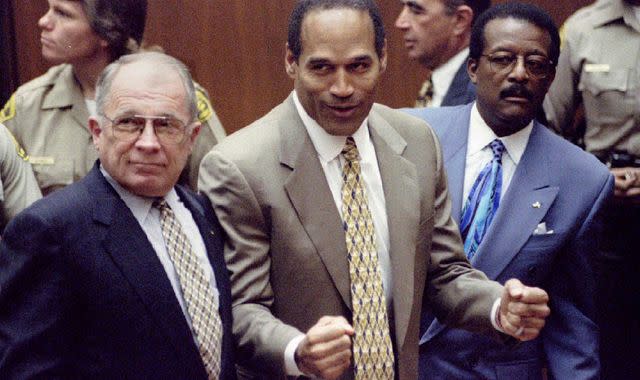How OJ Simpson became a symbol for racial division in the US

They couldn't see OJ Simpson's colour for his success. Until they could.
The American icon was fond of saying "I'm not black, I'm OJ" and, for long enough, America seemed fine with that.
With his superstar status, built on the football field and translated to the silver screen, OJ Simpson straddled the parallel lines of US society.
"The Juice", and a country's love for his achievement, put a squeeze on racial division.
America loves a winner and it welded itself to OJ's success. He delivered a sporting escape that enabled a country not just to rethink its position on race but allowed Americans not to think about it at all.
That changed upon his arrest in 1994 when, suddenly, OJ Simpson was all about his colour.
His prosecution divided the United States along racial lines as the good, the bad and the ugly of an American icon was laid out in a Los Angeles courtroom.
A central theme of his defence was the extent to which a black man could receive a fair trial for the alleged murders of white people.
The jury was predominantly African-American.
Read more:
OJ Simpson has died aged 76
How dramatic Simpson murder trial unfolded
Simpson dismissed rumours he was going into hospice
Alan Dershowitz, a trial lawyer for Simpson, told Sky News they calculated that black women on the jury were "black first and women second", while the prosecution saw it the other way round.
It was a trial defined along racial lines inside the courtroom and out.
Polls reflected a public view divided according to colour. The black community leaned towards innocence and white people the other way.
News networks covering the verdict sent cameras to different locations to gauge the response of people of different colour.
One side of the screen showed punch-the-air celebration, the other screamed bewilderment.
At the time, there was a context of racial tension in Los Angeles and ongoing police malpractice.
It had been a couple of years since the police beating of Rodney King, a black man, and subsequent riots.
OJ Simpson had never removed race, and its implications, as a cultural issue - as much as he, and everyone else, might have wanted it to.
It was one thing we learned in the trial of the century, along with so much more.


